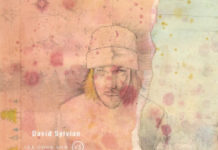Like any major city, London has a bustling gambling scene. From the classic casino buildings to the rise of online bettors on websites like sbobet, London’s gambling scene has a prosperous reputation. Also, London is known for being a city of culture and having a strong history in music. How did gambling in London begin, and how did the music that was played in these casinos influence the players? Read on for a brief history of music in casinos in London and the modern-day betting arenas.
Seventeenth Century
Truly, gambling found a home in London a century before with King Henry VIII and his gambling addiction. However, if you visit the popular Covent Garden spot Neal Street, you’ll have a glimpse into the rise of London’s betting scene. Sir Thomas Neale, who served under multiple kings, had the exciting job of ensuring that the royal table was never short on players or dice.
In 1694, Charles II told Sir Thomas Neale to oversee all of London’s gambling. His goal was to shut down any illegal gambling dens. His lasting impact on the city’s gaming secured him a street name. One of the biggest changes that he made to the gambling halls of the city was to start playing high-tempo music that was not blaring to the ears. As the people at the gambling halls were there to have a good time, the high tempo music elevated their pulses, invoking feelings of excitement and joy in the players there.
This high tempo music was also addictive, adding to the nature of the gambling halls, providing its patron a high that they could not find elsewhere outside. While this may not have made good impact on society, but it was successful in netting the owners of these gambling halls much profit.
Eighteenth Century
Gambling became a bit of an issue in London in the 1700s. The gap between rich and poor was suddenly in flux. A poor man could win a sum in a gamble, or a well-placed bet, and take off from the slums. Conversely, a rich man could lose all his funds in one risky move. The vice of gambling became a nuisance to London, and gambling clubs (later casinos) were referred to as “hells.” In order to show the public that these gambling clubs were safe, low tempo music was introduced, which would have calmed down the gamblers there. This feature of casinos still last today, and this is a testament to their effectiveness.
How this low tempo music helped was that – it causes all the anxiety and excitement of the gambling halls to soften, causing all the patrons in the halls to slow down their breathing and feel comfortable. By making the gambling halls a less dangerous place, one would feel much more at ease and stay longer, thus netting the casinos more profit over time.
Nineteenth Century
In the 1800s, William Crockford opened London’s (now oldest) casino called Crockfords. Located on Curzon Street, it remains one of London’s casino gems. The fact that the casino has remained open and withstood the test of time is a testament to London casinos.
Still, by using low tempo, comfortable sounding music at the entrance of the casinos, as well as high-tempo music at the tables to induce an artificial high in patrons, the addictiveness of casinos was heightened and they still managed to survive until modern day.
Twentieth Century and Beyond
If we pop ahead to the early 1960s, the UK passes the Betting and Gaming Act. Many forms of betting became fully legal, such as wagering on games of skill. Betting shops became prominent across London. The Clermont Club was the first casino to be granted a license after the Act was passed. Others, like the Golden Horseshoe and Charlie Chesters, followed.
One can say that music was a factor when it comes to creating the public impression of casinos, and how they last to today. For many, casinos are not just a place for one to lose money, but a place for high rollers to be at, a place of luxury and a place where winners and luck are celebrated and legends created. By introducing music that reflected these ideas, casinos are still celebrated and here to stay.






